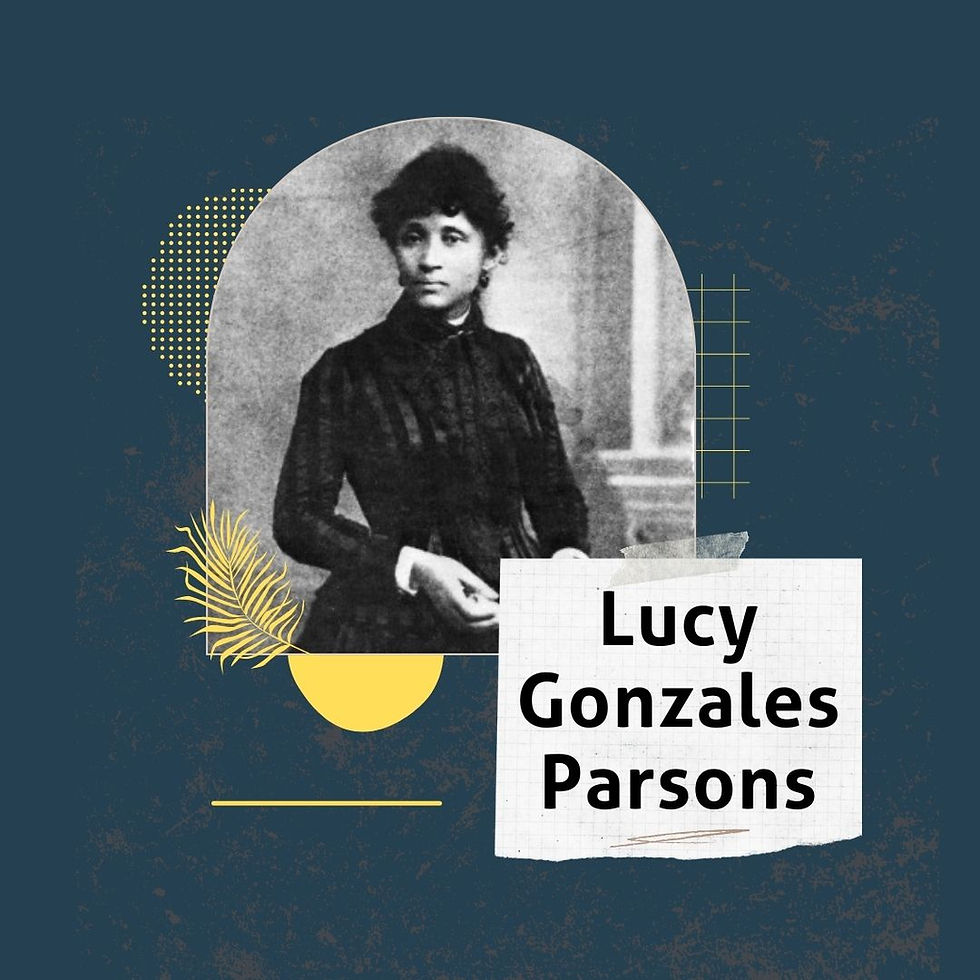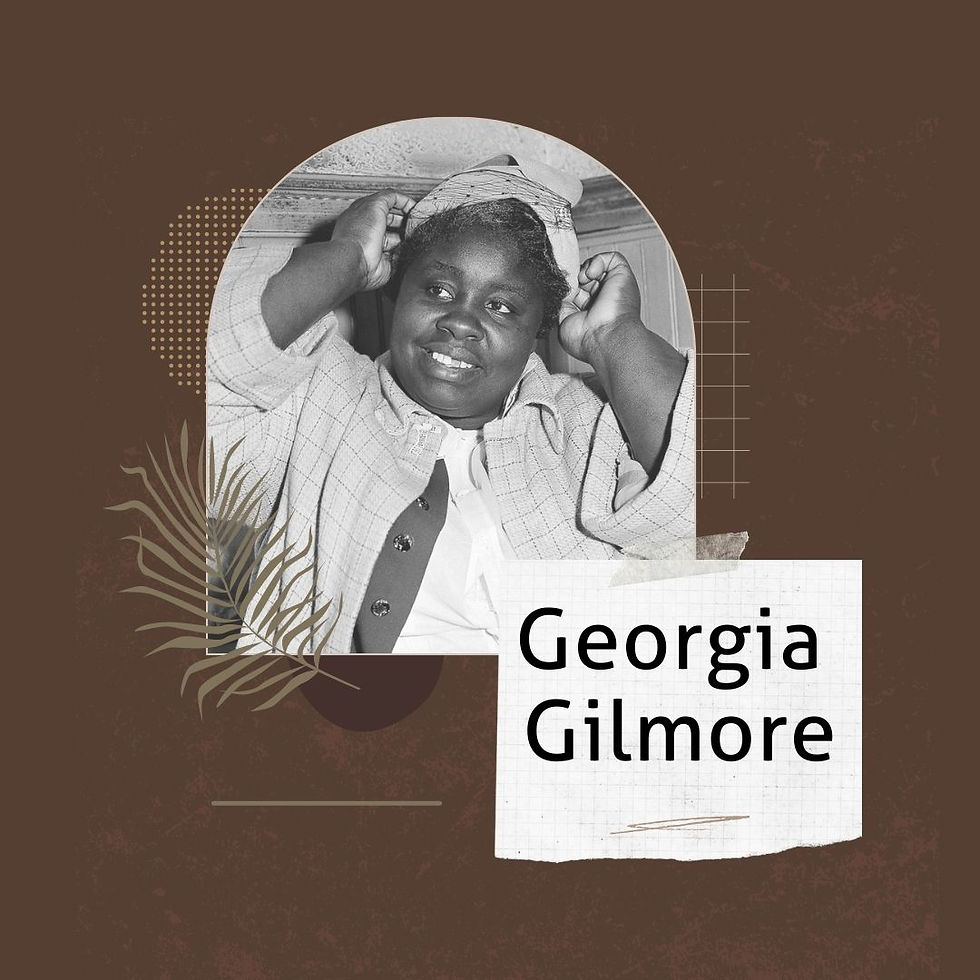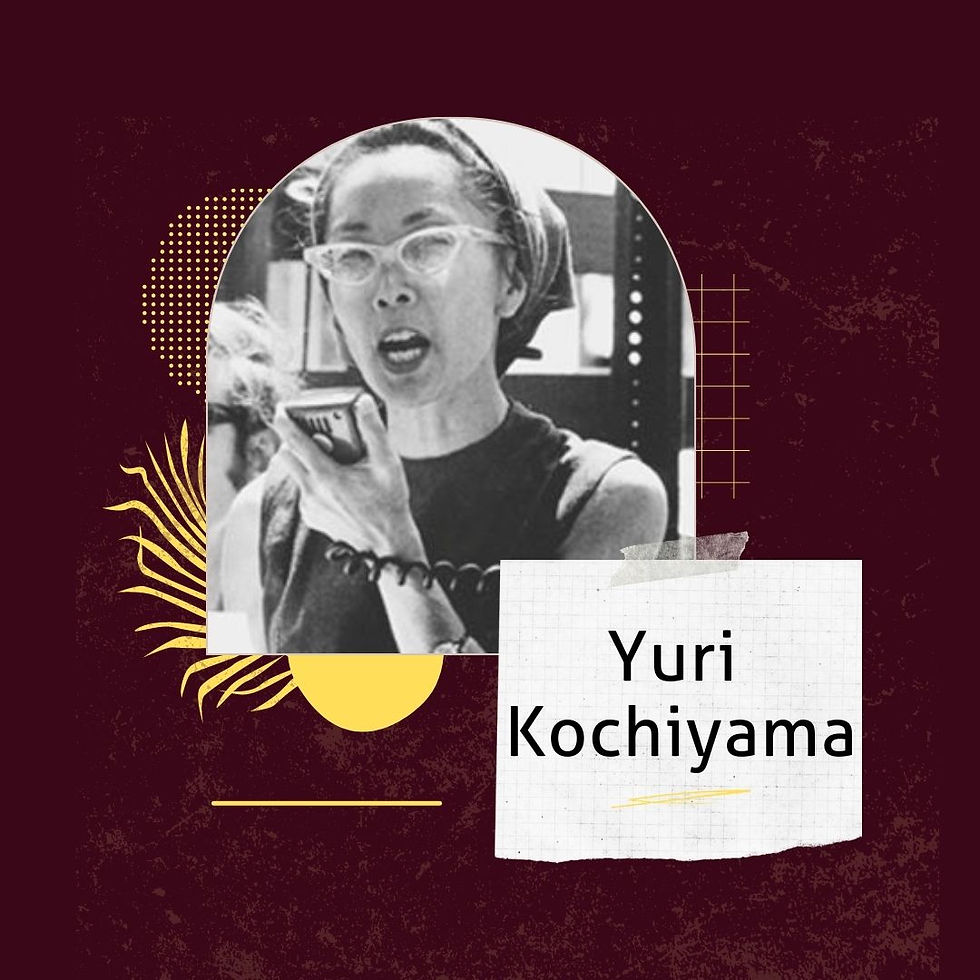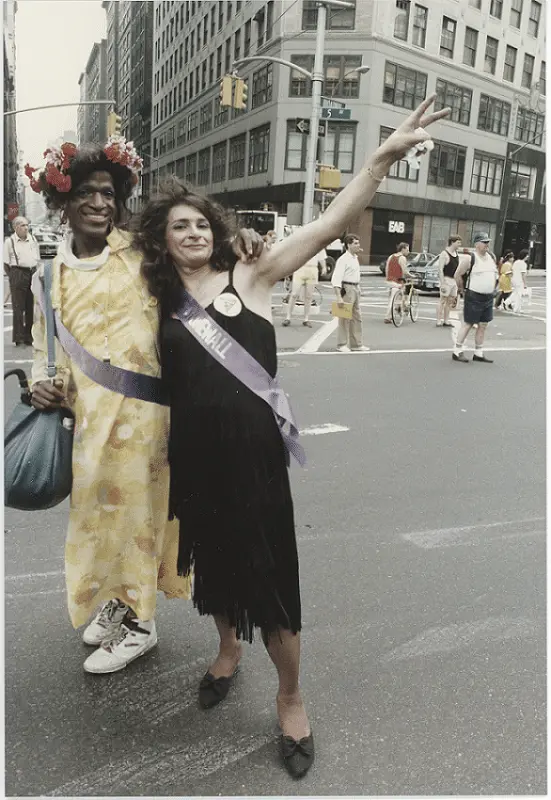Women on the front lines of community care
- Brenna Miaira Kutch

- Mar 23, 2023
- 5 min read
In the last article, we mentioned Ericka Higgens and her work with the Black Panther Party. This post shines a light on just a few of the women who spent much of their lives dedicated to collective care, community organizing, and aiding the marginalized in solidarity.
Almost everyone has heard of Susan B. Anthony, a famous women’s suffragette in the fight to give women the right to vote in the late 19th and early 20th century. However, what is lesser known is that she and many white women in the fight were incredibly racist and did not want any Black people to have the right to vote. In fact, many white women argued against women’s suffrage because they didn’t want it to extend to women of color. Fortunately, there were countless Black women and other women of color organizing in their communities and in their churches to support one another in this step for women’s rights - that those racist white women also benefited (and still benefit) from.

Lucy Gonzales Parsons is your new favorite justice hero-slash-badass. She is sometimes celebrated on May Day as a pillar of activism, as she and her husband led the first May Day parade demanding an eight-hour workday, which was otherwise unheard of at that time in 1886. She was of Mexican, African, and Native American descent who was born into slavery and was an activist for racial justice, labor rights, economic justice, and socialism (which, by definition, is community-focused). She also advocated for nonviolence in protest movements before Mahatma Gandhi famously did so. Parson’s tenacious activism led to conflicts with the Ku Klux Klan, economic elites, politicians, and police, and more—one Chicago official called her “more dangerous than a thousand rioters.”

Madam CJ Walker is recorded in the Guinness Book of World Records as the first female self-made millionaire in the US (of any race). While born and raised on a plantation, she grew to create and sell beauty and hair products in the early 1900s. She employed tens of thousands of other women over the years, and directly mentored other black women on budgeting, entrepreneurship, and financial independence. As an activist and philanthropist, she also gave significant time and money to gender and racial justice.

A 1958 flood in California left farmworkers like Maria Moreno displaced, without work, and denied food assistance. She began speaking out and her testimony led to farm workers obtaining food assistance from the local government agency. After that, she was elected by her Mexican-American, Filipino, Black, and Okie farm workers to become the first woman farm worker in America to be hired as a union organizer. Her activism set the stage for Cesar Chavez and Dolores Huerta, who are more commonly associated with this movement.

Famous for her cooking and as a restaurateur, Georgia Gilmore used these talents to support the Civil Rights movement in Montgomery, Alabama. After being fired for participating in the Montgomery Bus Boycott in 1955, she opened a restaurant in her home in part due to the encouragement of Dr. King, providing nourishment and a safe space for civil rights leaders. She organized other Black women to sell food as a way to keep supporting the movement while remaining undetectable by white employers or landowners. These funds were a large contribution to funding the alternative transportation system used in the 381-day bus boycott

Yuri Kochiyama, famously photographed with Malcom X as he passed in 1965, describes herself as a patriotic American youth until she experienced internment in a Japanese concentration camp and witnessed the racism directed at her and her family. She later became involved in fighting for better quality schools for her children and others in Harlem, and became a major advocate for social justice and community care. She not only fought for rights and liberation for her own community of Japanese Americans, but worked alongside the Black Panthers, the Young Lords, and the Harlem Community for Self Defense. She also founded Asian Americans for Action and sought to build an Asian American movement that linked itself to the struggle for Black liberation. “Racism has placed all ethnic peoples in similar positions of oppression, poverty, and marginalization.”

Known as icons of Pride, Marsha P. Johnson and Sylvia Rivera were on the front lines of the Stonewall Uprising in 1969; this was a time when “cross-dressing” and dancing with someone of the same gender were illegal, and police regularly raided bars to beat and arrest queer people. Rivera and Johnson were active participants of the Gay Liberation Front and founded the Street Transvestite Activist Revolutionaries (STAR) to provide housing and support for other transgender people, especially in a movement that centered cisgender white middle-class people. Despite their houselessness, poverty, and many forms of oppression, they gave food, clothing, and safety to community members as much as possible. (Source: NY Historical Society)
During the AIDS crisis in the 1980s and 1990s, gay men were treated like pariahs; they were ignored and avoided by mainstream society and medical providers alike out of fear of contaigens. In this time, lesbians stepped up, despite the rampant misogyny that gay men had towards lesbians previously. These women petitioned the government for a better AIDS response and provided the men with food, clothing, housing, medical care, and companionship. They even donated their blood, as gay men were banned from donating (and still face restrictions today), saving many lives as HIV patients were in desperate need of blood transufsions.
Today, Mia Ives-Rublee is involved in many intertwining justice movements, and was a co-organizer of the original 2017 Women’s March and founded its Disability Caucus. She is an international athlete, Paralympian, and coach, and has taught others about adaptive athletics. Mia is involved with community movements and political advocacy to advance causes for disabled women, Asian Americans, access to outdoor recreation, voting (including leading one of the highest turnouts of AAPI voters in Georgia history in 2020), and banning plastics, among others.
And of course, it’s not just women in the United States engaged in mutual aid and community care. One example is the women in N'wamitwa, South Africa, who established a co-operative farm in a drought to provide produce year-round and started a “savings club” rooted in shared labor and mutual aid. Jinwar (Kurdish for “woman’s land”) is a community in Syria where women can live together in solidarity with one another. Those escaping abuse and a patriarchal capitalist society, and widows with children, join this commune where they are responsible for the upkeep of the village and for their neighbors. The Jinwar also includes an academy where they can teach and learn from one other.
These are just a few specific examples of women who have sacrificed their time, labor, money, freedom, and even their lives for the justice and care of others. And not just those in their own communities, but to provide mutual aid and liberation to many others facing different kinds of oppression. In the next article, we’ll dive more into the facts and impacts of this labor being done both for and by those who are marginalized.






Comments